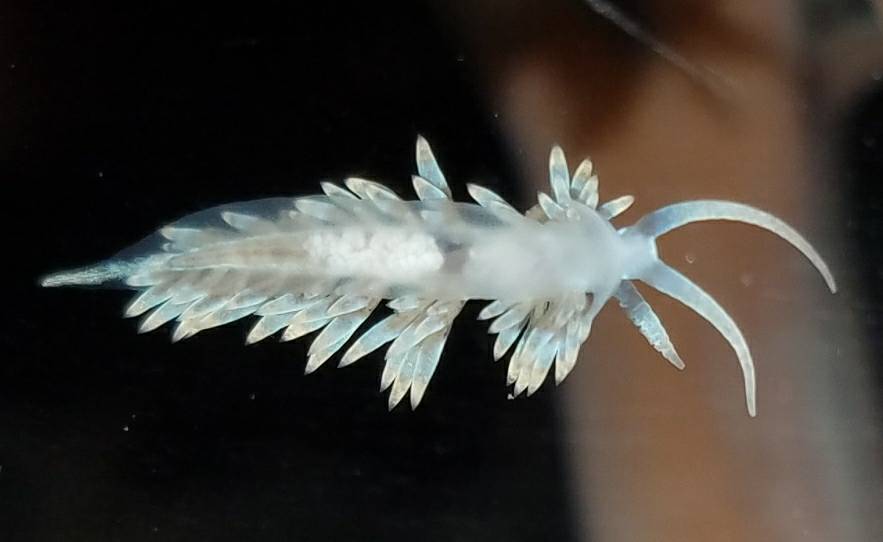A thriving saltwater aquarium requires understanding and managing the various algae types that can emerge within it. This in-depth guide will help you identify common saltwater algae types, pinpoint their causes, and offer solutions for controlling and preventing their growth.
By recognizing the algae in your tank and tackling its root cause, you can maintain a balanced and healthy marine environment.
Green Hair Algae (GHA)
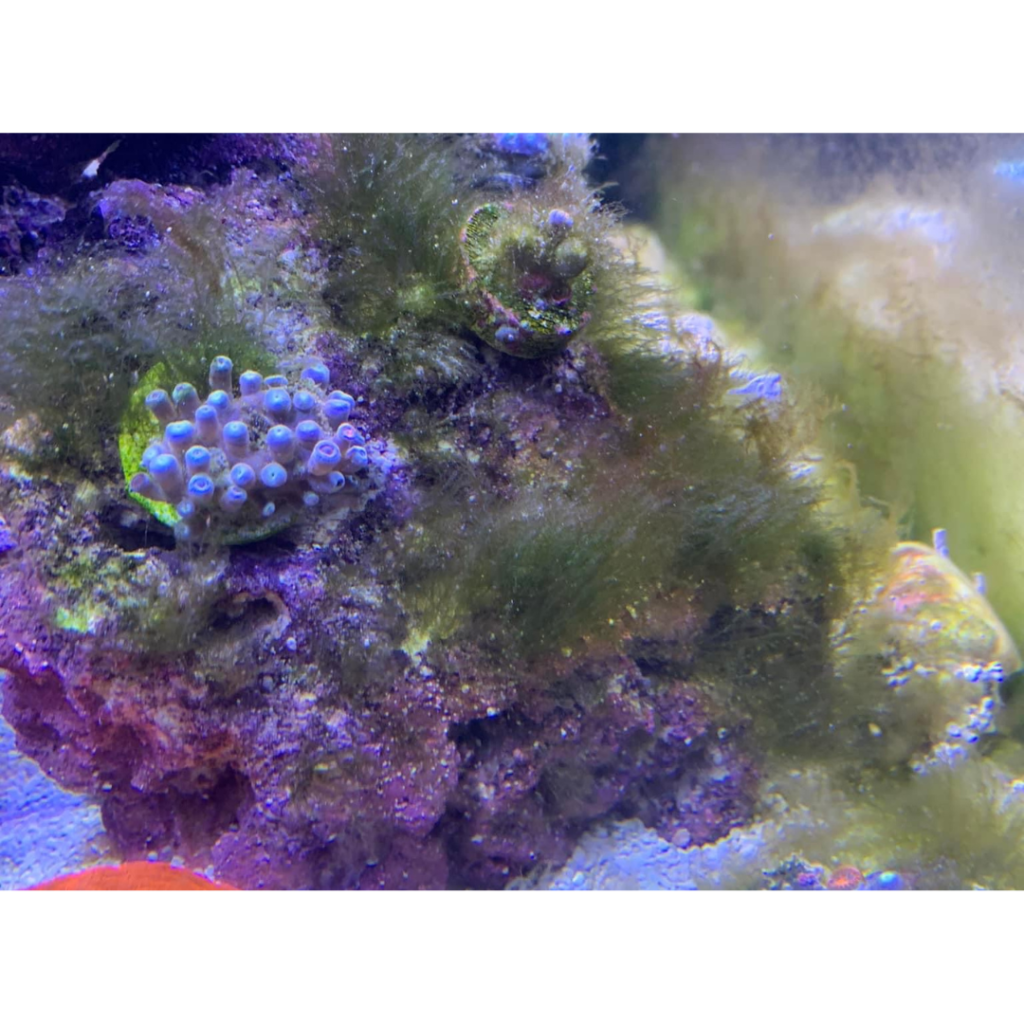
How to Identify Green Hair Algae: Green hair algae is one of the most common saltwater algae types. It feature long, slender, green filaments that can rapidly form large clumps. They can cover rocks, sand, and other surfaces in the tank, giving it an unkempt appearance.
Causes Of Green Hair Algae: Green hair algae often results from excessive nutrients, particularly nitrates and phosphates, in the water column. Factors such as poor water quality, inadequate water flow, and insufficient maintenance can also contribute to GHA growth.
How To Get Rid of Green Hair Algae: To control GHA, begin by testing and reducing nutrient levels in the tank. Conduct regular water changes, utilize a quality protein skimmer, and consider incorporating phosphate-removing media into your filtration system. Manually remove GHA with a toothbrush, and introduce algae-eating creatures like snails, crabs, and tangs to help regulate its growth. You can also apply a small amount of hydrogen peroxide directly onto the hair algae
How To Get Rid Of Green Hair Algae In a Saltwater Tank
Cyanobacteria (Red Slime Algae)
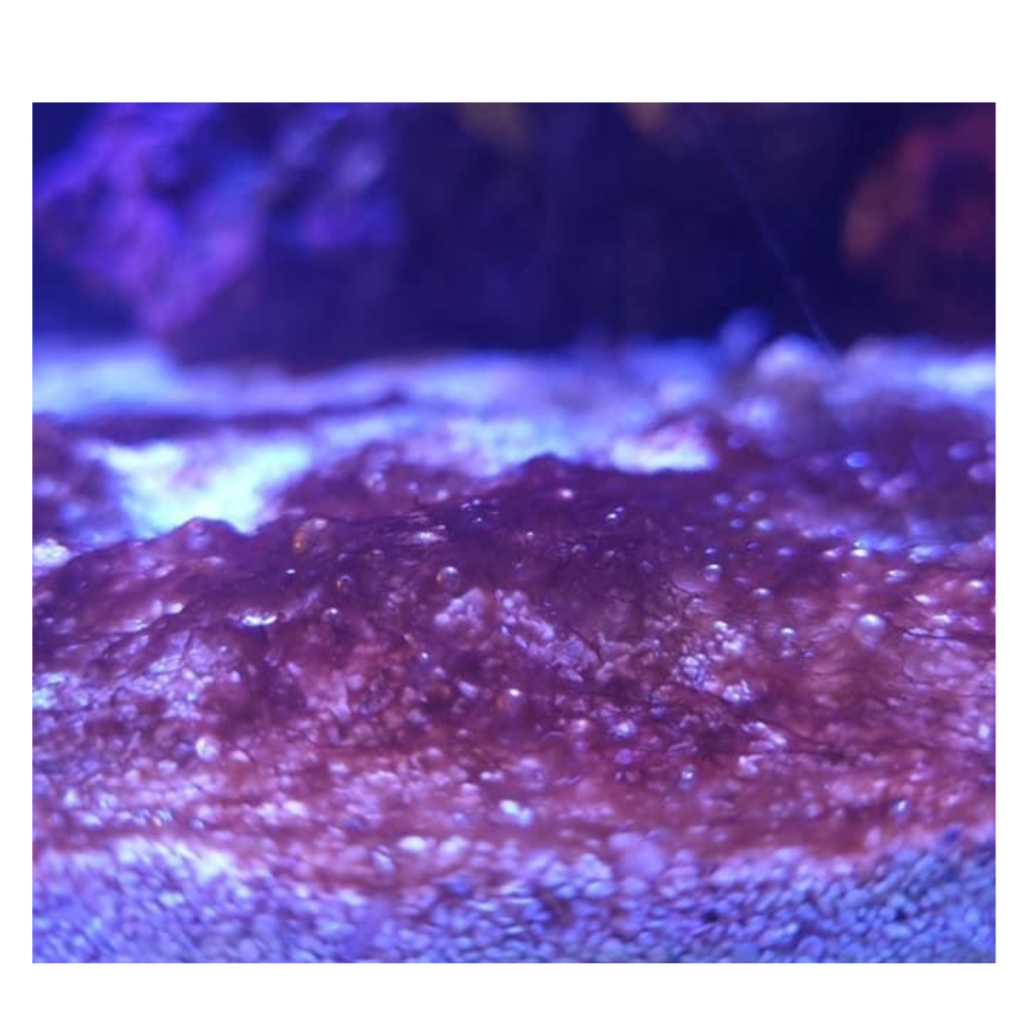
How To Identify Cyano: Cyanobacteria, often called “red slime algae,” present as a slimy, reddish-brown layer that forms dense mats covering sand, rocks, and other surfaces in the tank.
Causes Of Cyano: Cyanobacteria flourish in environments with elevated nutrient levels, especially nitrates and phosphates, and low water flow. Other contributing factors include poor water quality, infrequent maintenance, and excessive lighting.
How To Get Rid of Cyanobacteria: Lower nutrient levels by performing regular water changes, using a quality protein skimmer, and adding phosphate-removing media. Improve water flow in areas prone to cyanobacteria and consider reducing your aquarium lights’ photoperiod. Manually remove cyanobacteria and introduce beneficial bacteria to compete for resources.
Diatoms
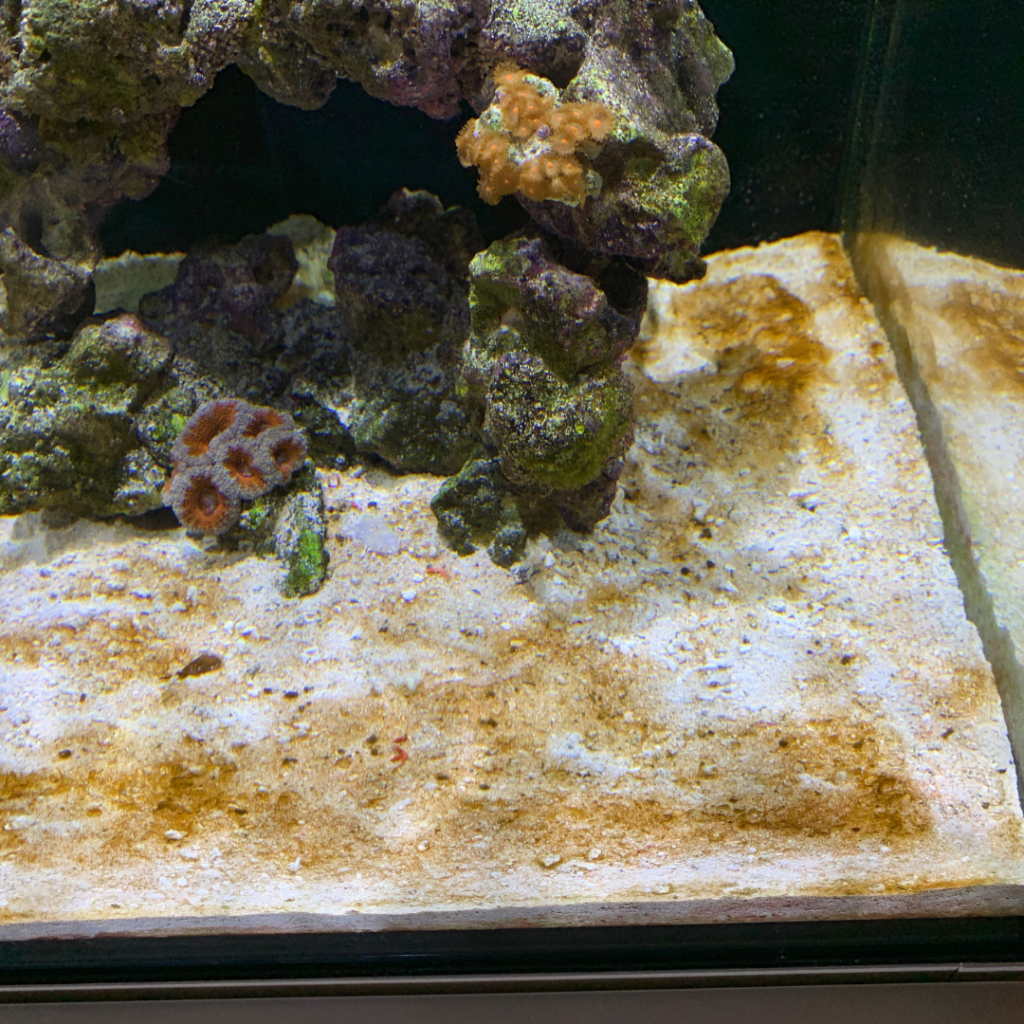
How To identify Diatoms: Diatoms manifest as a brown, dusty-looking film that covers surfaces in the aquarium, including glass, rocks, and sand. They are most prevalent in new tanks during the initial cycling process.
Read More on Cycling Your Tank
Causes Of Diatoms: Diatoms result from an abundance of silicates and nitrates in the water column. They commonly appear in newly established tanks, where the ecosystem has not yet balanced itself.
How To Get Rid of Diatoms: Diatoms typically disappear on their own as the tank matures and silicate levels decrease. To expedite the process, perform regular water changes, use a protein skimmer, and introduce silicate-removing media. Add snails and hermit crabs to consume diatoms.
Related: Diatoms or Dinos: How to identify the Difference (From Expert Reefers)
Bubble Algae (Valonia)
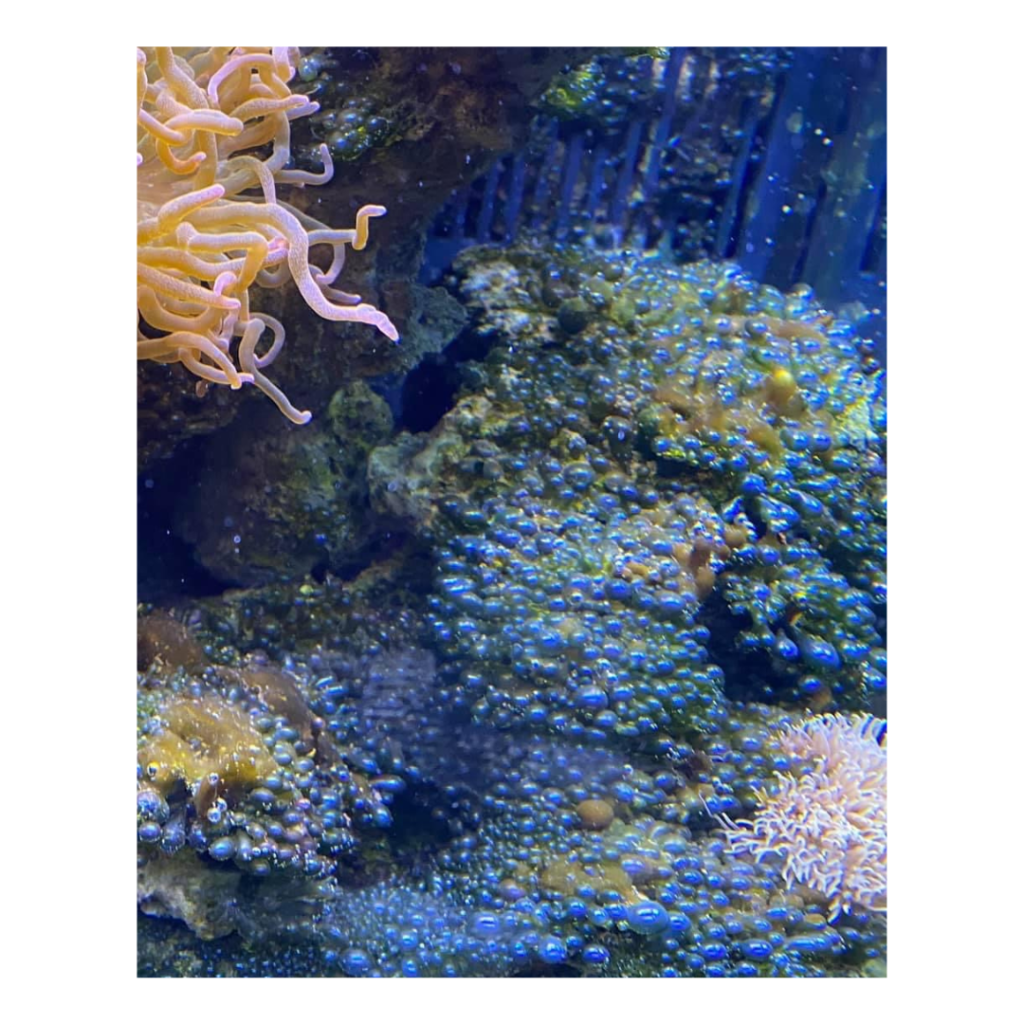
How To identify Bubble Algae: Bubble algae are characterized by their round, green, bubble-like appearance. They can grow individually or in clusters and can be challenging to remove once established.
Causes Bubble Algae: Bubble algae result from excessive nutrients, particularly phosphates, and poor water quality. Inadequate tank maintenance and overfeeding can also contribute to their growth.
How To Get Rid of Bubble Algae: Carefully manually remove bubble algae, avoiding rupturing the bubbles, which can release spores and exacerbate the issue. Implement regular water changes, use a quality protein skimmer, and add phosphate-removing media to your filtration system. Introduce algae-eating critters like emerald crabs, known to consume bubble algae.
Read our full article on How to Get Rid of Bubble Algae: Easy To Follow Steps For Success
Green Film Algae
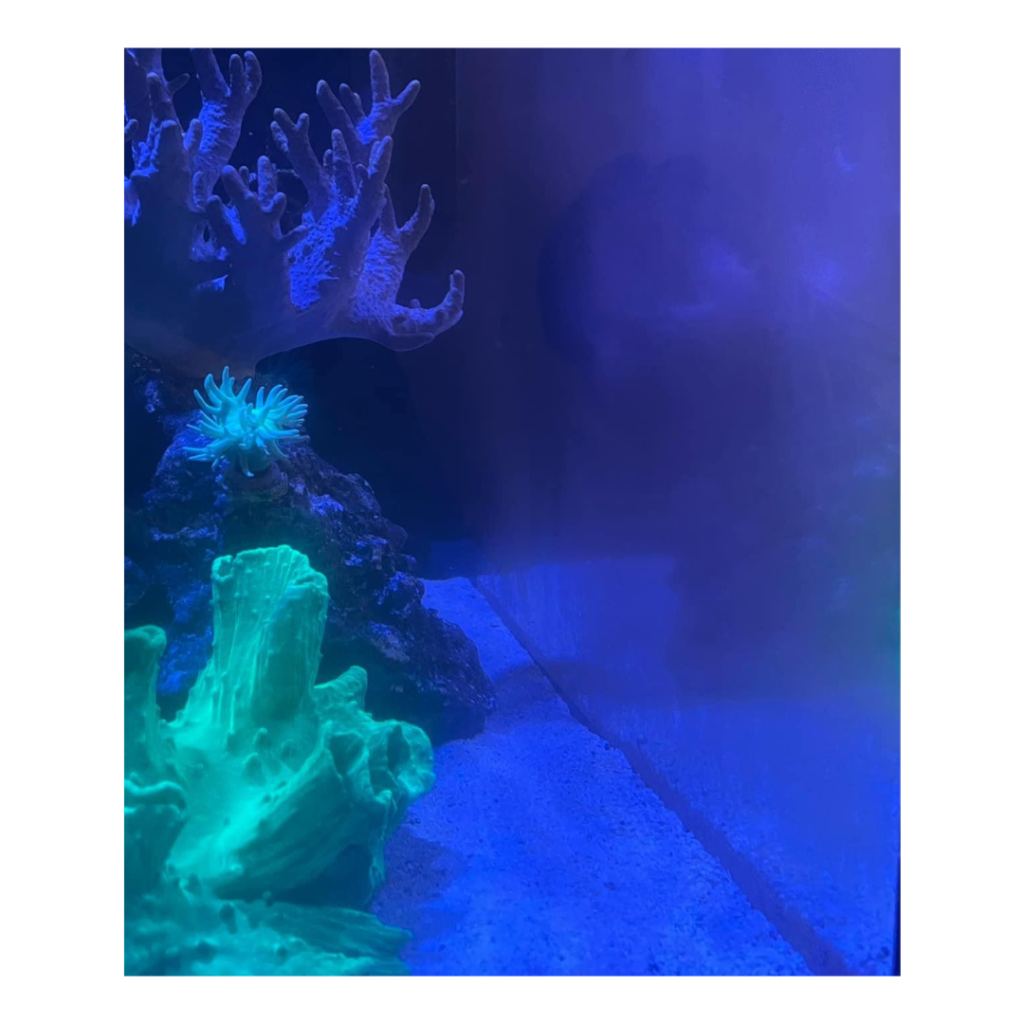
How To identify Green Film Algae: Green film algae form a thin, green layer on aquarium glass and other surfaces. Easily wiped away, they can appear in both new and established tanks.
Causes of green Film Algae: Green film algae result from excess nutrients, such as nitrates and phosphates, and imbalanced lighting conditions.
How To Get Rid of Green Film Algae: Regularly clean the aquarium glass with an algae scraper or magnetic cleaner. Implement water changes, use a quality protein skimmer, and adjust the photoperiod of your aquarium lights to maintain balanced lighting conditions. Introduce algae-eating creatures like snails and hermit crabs to help control green film algae.
Dinoflagellates
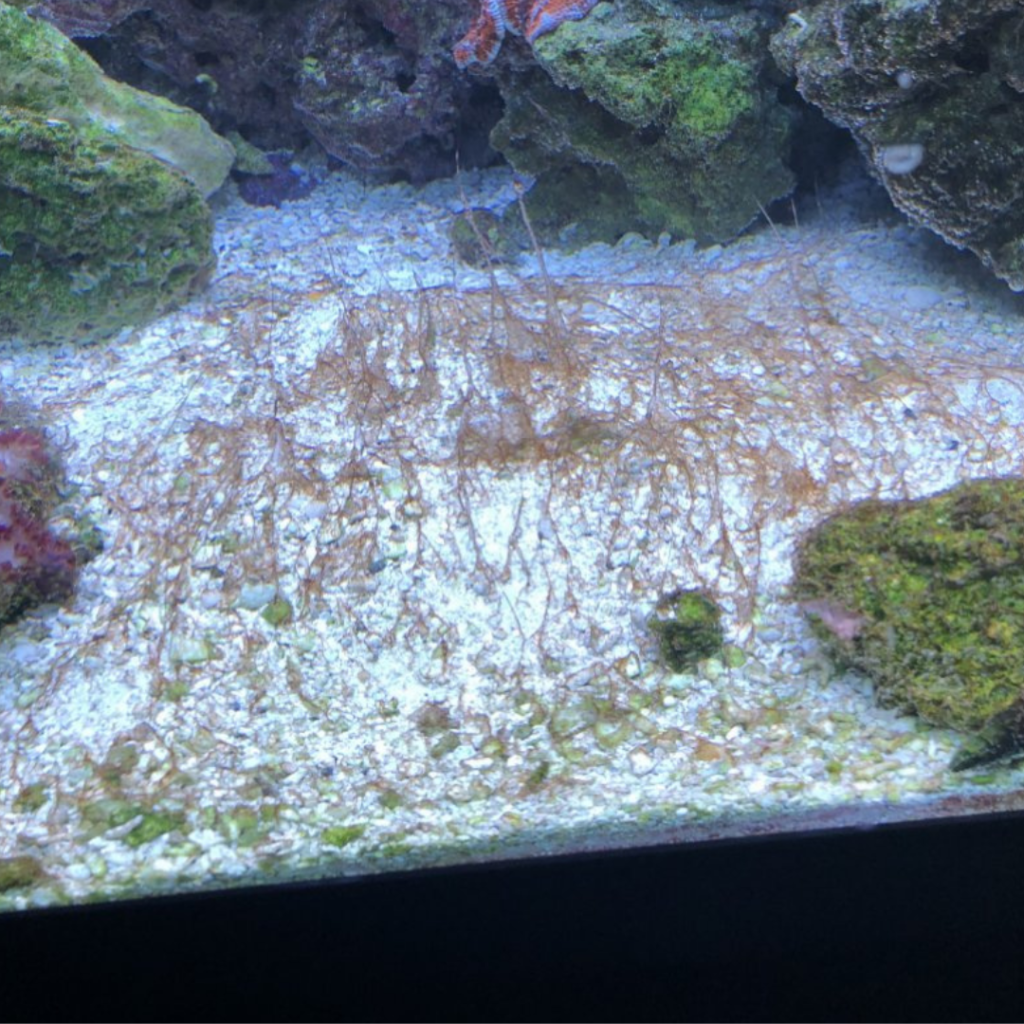
How To identify Dinoflagellates : Dinoflagellates are microscopic, free-floating algae that can appear as a brown, slimy film on surfaces in the tank. They can also cause the water to appear cloudy.
Causes of Dinos: Dinoflagellates can be caused by poor water quality, high nutrient levels, and inadequate water flow.
How To Get Rid of Dinos: Increase water flow in the tank, perform regular water changes, and use a protein skimmer to improve water quality. Consider using a UV sterilizer to help control dinoflagellate populations. Manually remove the algae and monitor nutrient levels closely.
Read Next: How To Get Rid of Dinos: Step-by-Step Guide
Bryopsis
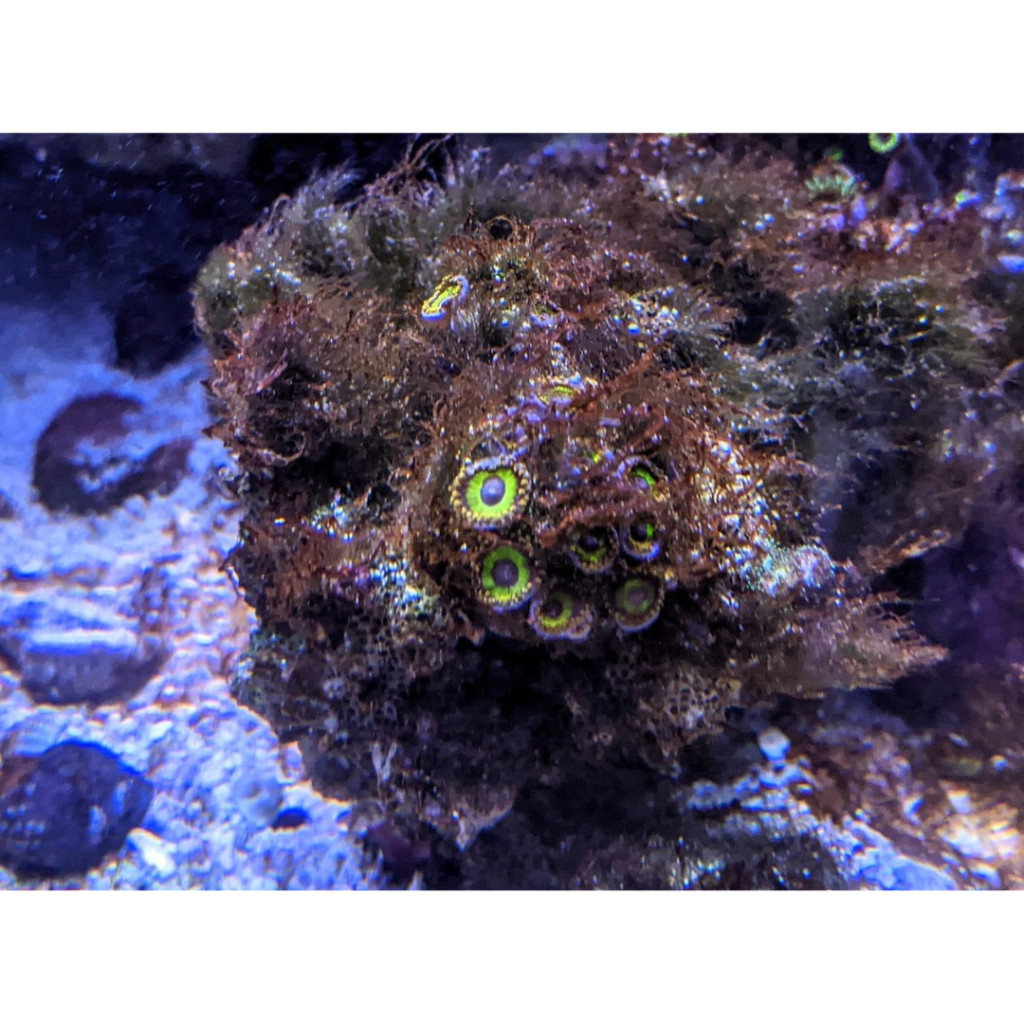
How To identify Bryopsis: Bryopsis is a green, feather-like algae that can grow rapidly and attach itself to rocks and other surfaces in the aquarium.
Causes of Bryopsis: Bryopsis thrives in environments with high nutrient levels, particularly nitrates and phosphates, and in tanks with low magnesium levels.
How To Get Rid of Bryopsis: Manually remove the algae and perform regular water changes to reduce nutrient levels. Adjust magnesium levels if necessary, and consider adding a quality protein skimmer to your filtration system. Introduce algae-eating critters like sea hares and some tangs, which may help control Bryopsis growth.
Conclusion:
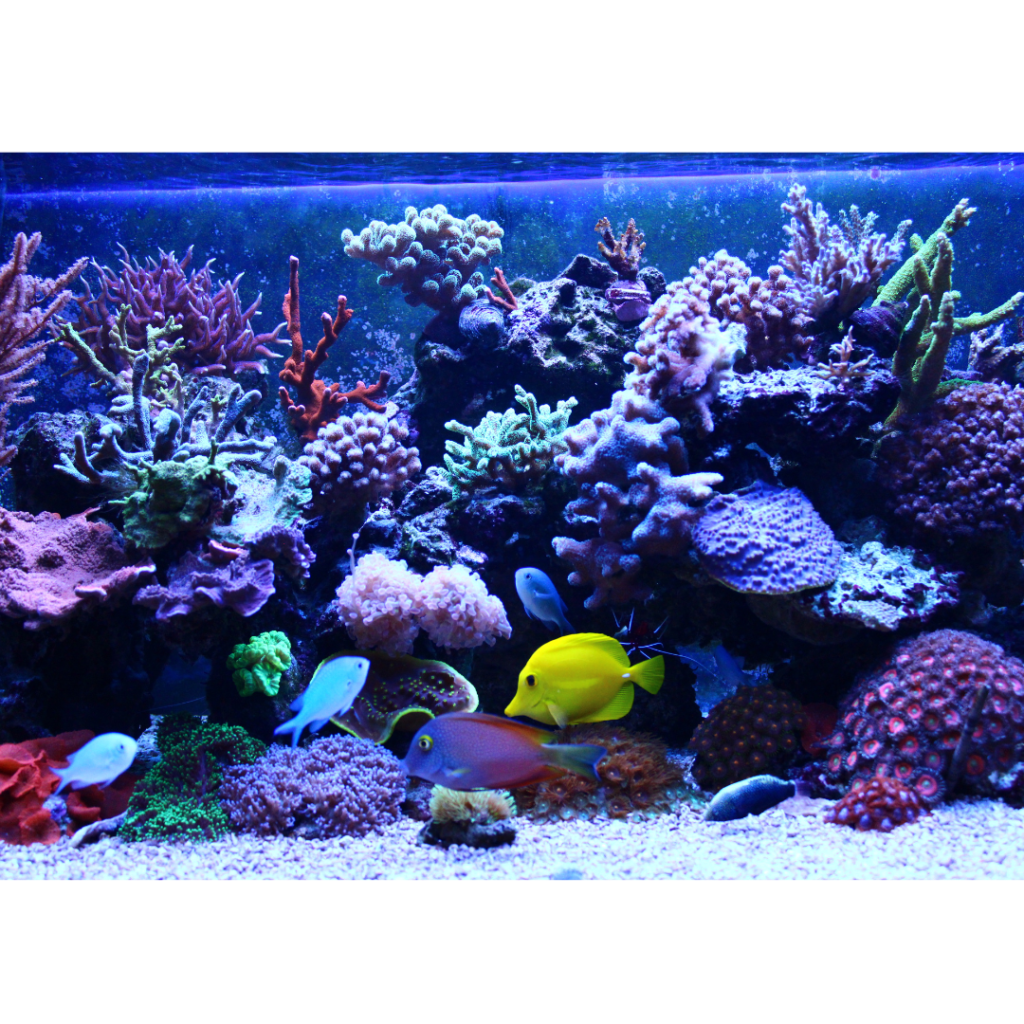
Algae growth in a saltwater aquarium is natural, but it can become problematic if left unchecked. By understanding the various types of algae, their causes, and appropriate management techniques, you can maintain a balanced and healthy marine environment.
This comprehensive guide provides the knowledge and tools needed to identify, prevent, and control common saltwater algae types. With proper care and attention, you can create a thriving, visually appealing, and stable ecosystem that both you and your marine life will enjoy.
You May Also Like: How To Get Rid of Aiptasia Anemones



